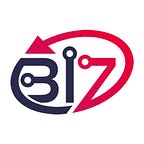What is Web 3.0 and why is it significant?
One of the main objectives and advantages of the Web 3.0 upheaval is for the world’s data innovation biological systems to re-decentralize. The web, when it began, was a profoundly decentralized framework. Unified frameworks have, on schedule, layered themselves effectively across this decentralized environment.
The financial matters of the product business and the force of organization impacts is the establishment for the centralization of the Web 2.0 time, and they are helped along by liberal utilization of dim examples on clients also (for example Web 2.0 stunts to get individuals to surrender individual information).
If we don’t watch out, we hazard rehashing a portion of similar examples in the Web 3.0 time.
Set forth plainly, with Web 3.0, you won’t require a record for every friendly stage. With only one record, you could consistently move between various social stages, peruse the web for data, or even shop.
Envision another sort of web that precisely deciphers what you input, yet really comprehends all that you pass on, regardless of whether through text, voice, or different media, one where all substance you burn through is more custom-made to you than any other time in recent memory.
We are at the tipping point of another stage in the web’s advancement. A few early trailblazers call it Web 3.0.
Ostensibly, there are a couple of beginning phase Web 3.0 applications that as of now exist today, however until the new web turns out to be completely installed in the web foundation, their actual potential can’t be noticed.
Yet, what precisely is Web 3.0, what will it resemble and how might it completely change us?
Web 3.0 was initially called the Semantic Web by World Wide Web innovator Tim Berners-Lee and was pointed toward being a more independent, canny, and open web.
The Web 3.0 definition can be extended as follows: information will be interconnected in a decentralized way, which would be a tremendous jump forward to our present age of (Web 2.0), where information is for the most part put away in concentrated stores.
Moreover, clients and machines will actually want to communicate with information. Be that as it may, for this to occur, programs need to comprehend data both theoretically and logically. Considering this, the two foundations of Web 3.0 are semantic web and computerized reasoning (AI).
Web 1.0 (1989–2005)
Web 1.0, likewise called the Static Web, was the first and most dependable web during the 1990s in spite of just contribution admittance to restricted data with practically no client collaboration. Once upon a time, making client pages or in any event, remarking on articles wasn’t a thing.
Web 1.0 didn’t have calculations to filter web pages, which made it very difficult for clients to track down applicable data. Basically, it resembled a single-direction expressway with a limited trial where content creation was finished by a chosen handful and data came for the most part from indexes.
There were not very many substance makers when the web initially carried data nearer to the searchers.
The whole environment was dependent on content purchasers who established a significant lump of all web clients.
The vast majority of the substance was accessible as static site pages and was facilitated on either web servers run by Internet Service Providers (ISPs) or free web servers.
In this way, Web 1.0 was framed as a ‘content conveyance organization.’
As the displayed content was burned-through, clients were charged per page saw. Online registries pointed substance purchasers towards the data they were looking for.
Web 2.0 (2005-present)
The Social Web, or Web 2.0, made the web much more intelligent on account of headways in web innovations like Javascript, HTML5, CSS3, and so on, which empowered new businesses to fabricate intuitive web stages like YouTube, Facebook, Wikipedia, and some more.
This made it ready for both informal communities and client-created content creation to prosper since information can now be appropriated and divided among different stages and applications.
As more substance designers came on the web, sites began facilitating client-created data, subsequently zeroing in on the ease of use of the substance.
Sites on the web turned out to be more intelligent and content shoppers were permitted to connect with designers through remarks on the developed website pages.
Thusly, the substance turned out to be more powerful as it was being adjusted dependent on client input. The progression of data became more liberated and correspondence between site proprietors and site clients improved.
Web 3.0 (yet to come)
Web 3.0 is the following phase of the web advancement that would make the web more clever or cycle data with close human-like insight through the force of AI frameworks that could run shrewd projects to help clients.
While Web 2.0 further developed correspondence and online cooperation, Web 3.0 moved its concentration to availability, content significance, content effort, and execution.
Following quite a while of underscoring the vibe of sites and site pages, work on the advancement of ‘back end’ capacities has started. The main impetus for this improvement was client experience. Web 3.0 digs profound into plenty of angles.
Tim Berners-Lee had said that the Semantic Web is intended to “consequently” connect with frameworks, individuals, and home gadgets.
Thusly, content creation and dynamic cycles will include the two people and machines. This would empower the smart creation and dispersion of exceptionally fitted substances directly to each web customer.
In this third-age web, destinations and pages will gather the data clients pass on (through voice, text, or different types of media) and cleverly process it to tailor it for every client.
A similar substance will be shown distinctively for various clients. The striking component, in this manner, is information will presently don’t be claimed by a solitary substance yet be a common asset.
